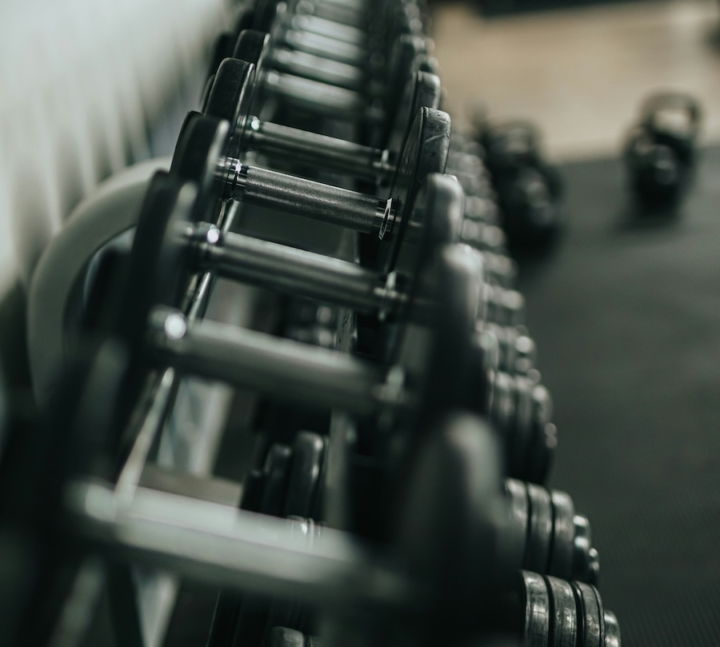Exercise
Lever Lateral Raise
How to Perform - Lever Lateral Raise
- Stand upright holding a lever attachment with your arm fully extended at your side, palm facing inward toward your body.
- Maintain a slight bend in your elbow throughout the movement to reduce joint stress while keeping your back straight and core engaged.
- Exhale as you slowly raise the lever attachment outward and upward, lifting from your shoulder joint rather than swinging with momentum.
- Keep your wrist neutral and in line with your forearm as you lift, avoiding any wrist flexion or extension.
- Raise the attachment until your arm is parallel to the floor or slightly higher, maintaining proper shoulder positioning without shrugging.
- Pause briefly at the top of the movement, focusing on contracting the middle deltoid muscle.
- Inhale as you slowly lower the attachment back to the starting position with control, resisting gravity throughout the descent.
- Complete all repetitions on one side before switching to the other arm, maintaining the same controlled tempo throughout.
Important information
- Keep your shoulder blades slightly retracted and depressed to protect your rotator cuff during the movement.
- Avoid leaning your torso to assist the lift—this reduces the work on your targeted deltoid muscles.
- Control the weight throughout the entire range of motion; if you need momentum to lift, reduce the resistance.
- Maintain a slight bend in your elbow throughout the exercise to reduce stress on the joint while maximizing deltoid activation.
Primary Muscles
Muscle Groups
Mechanic
Risk Areas
Built for progress
Take the guesswork out of training
Create personalized AI-powered workout plans that evolve with you. Train smarter, track every rep and keep moving forward, one workout at a time.






The lever lateral raise stands as a stellar intermediate-level movement for bodybuilders and strength enthusiasts looking to sculpt impressive side deltoids. This machine-based variation of the traditional dumbbell lateral raise offers unique advantages that make it particularly effective for isolated shoulder development. Unlike free-weight alternatives, the lever mechanism creates a consistent resistance curve throughout the movement, allowing for targeted tension on the medial deltoid: the muscle that gives shoulders that coveted rounded, capped appearance. This mechanical advantage makes it an excellent choice for those who've progressed beyond beginner status but may not yet have the stabilization strength required for advanced shoulder training protocols.
For bodybuilders, the lever lateral raise serves as a precision tool for sculpting symmetrical shoulders. The fixed movement path eliminates much of the cheating that often occurs with free weights, ensuring that the side delts receive maximum stimulation with each repetition. This isolation factor makes it particularly valuable during contest preparation phases when definition and separation become paramount. Strength athletes find value in this exercise as well, particularly for addressing imbalances and weaknesses in the shoulder complex. The lever system allows for measurable progressive overload (a cornerstone principle of strength development) while minimizing stress on the rotator cuff compared to heavier compound movements.
What truly sets the lever lateral raise apart is its versatility within training programs. It functions effectively as both a primary movement in shoulder-focused sessions and as a finishing exercise to fully exhaust the deltoids after pressing movements. Many experienced lifters incorporate it during metabolic conditioning phases, leveraging its isolated nature for high-rep burnout sets that promote muscle endurance and vascular development. When incorporated consistently into a well-designed training program, the lever lateral raise delivers impressive development to the side deltoid region, contributing significantly to that sought-after V-taper physique that marks accomplished bodybuilders and strength athletes alike.
FAQ - Lever Lateral Raise
The lever lateral raise primarily targets the medial (side) deltoid, which gives shoulders their width and capped appearance. It also engages the anterior deltoid and upper trapezius as secondary muscles, while the machine's fixed path helps minimize unwanted assistance from other muscle groups.
The lever mechanism provides consistent resistance throughout the entire range of motion, unlike dumbbells where resistance varies due to gravity. This machine variation also forces a fixed movement path, reducing cheating and ensuring better isolation of the side deltoids while placing less stress on the rotator cuff joints.
For hypertrophy (muscle growth), perform 3-4 sets of 10-15 reps with moderate weight. If you're focusing on strength, use heavier weight for 3-4 sets of 8-10 reps, while endurance training calls for 2-3 sets of 15-20 reps with lighter weight. Rest 60-90 seconds between sets regardless of your goal.
Avoid using momentum by swinging your body, which reduces tension on the target muscles. Don't raise your arms above shoulder height, as this shifts focus to the traps and can impinge the shoulder. Finally, resist the temptation to select weight that's too heavy, which compromises form and reduces medial deltoid activation.
Include lever lateral raises 1-2 times weekly for beginners and up to 3 times weekly for advanced lifters, always allowing 48-72 hours for deltoid recovery between sessions. This exercise works well both as a primary movement on shoulder-focused days or as a finishing exercise after compound pressing movements in upper body workouts.






